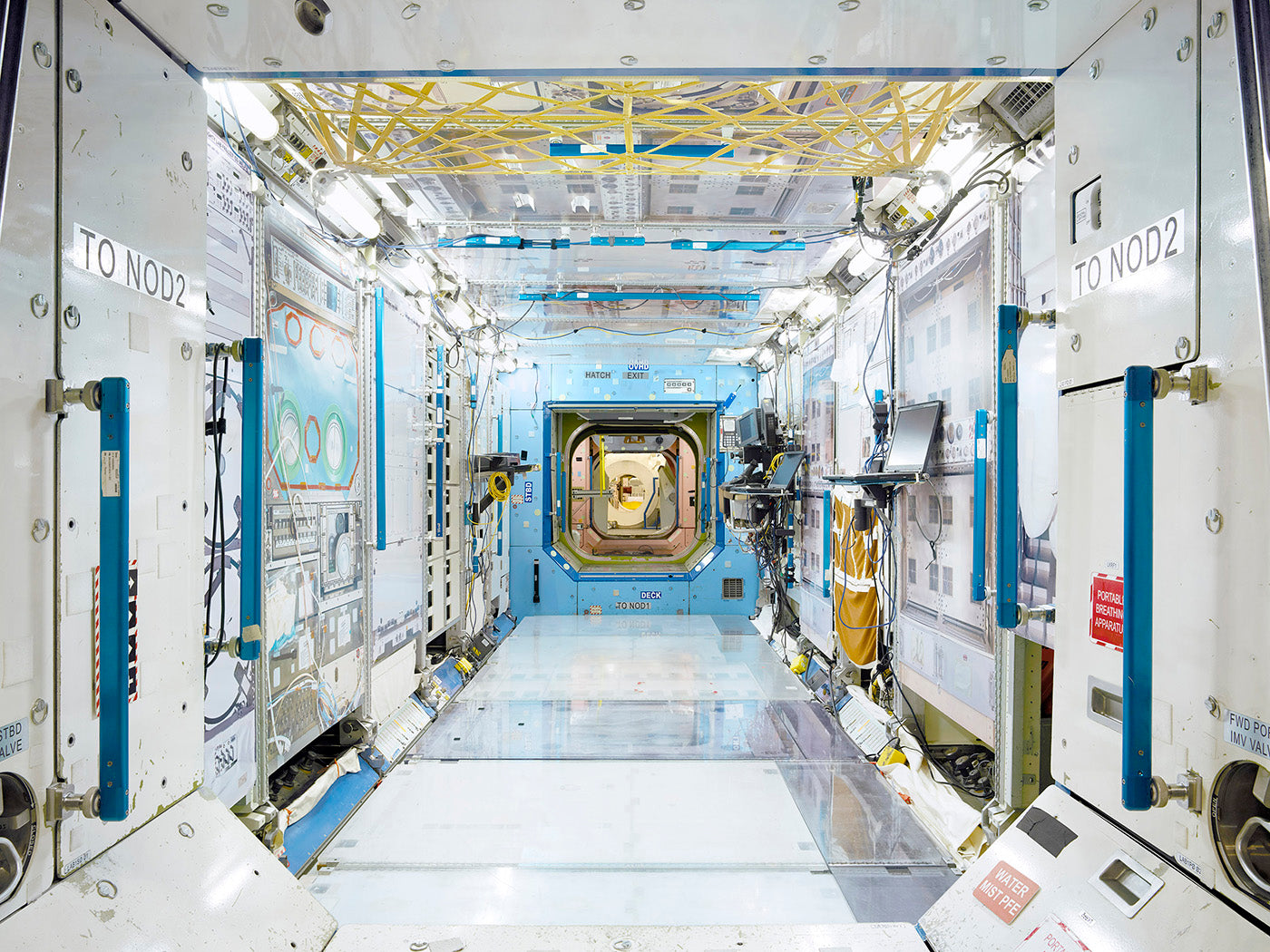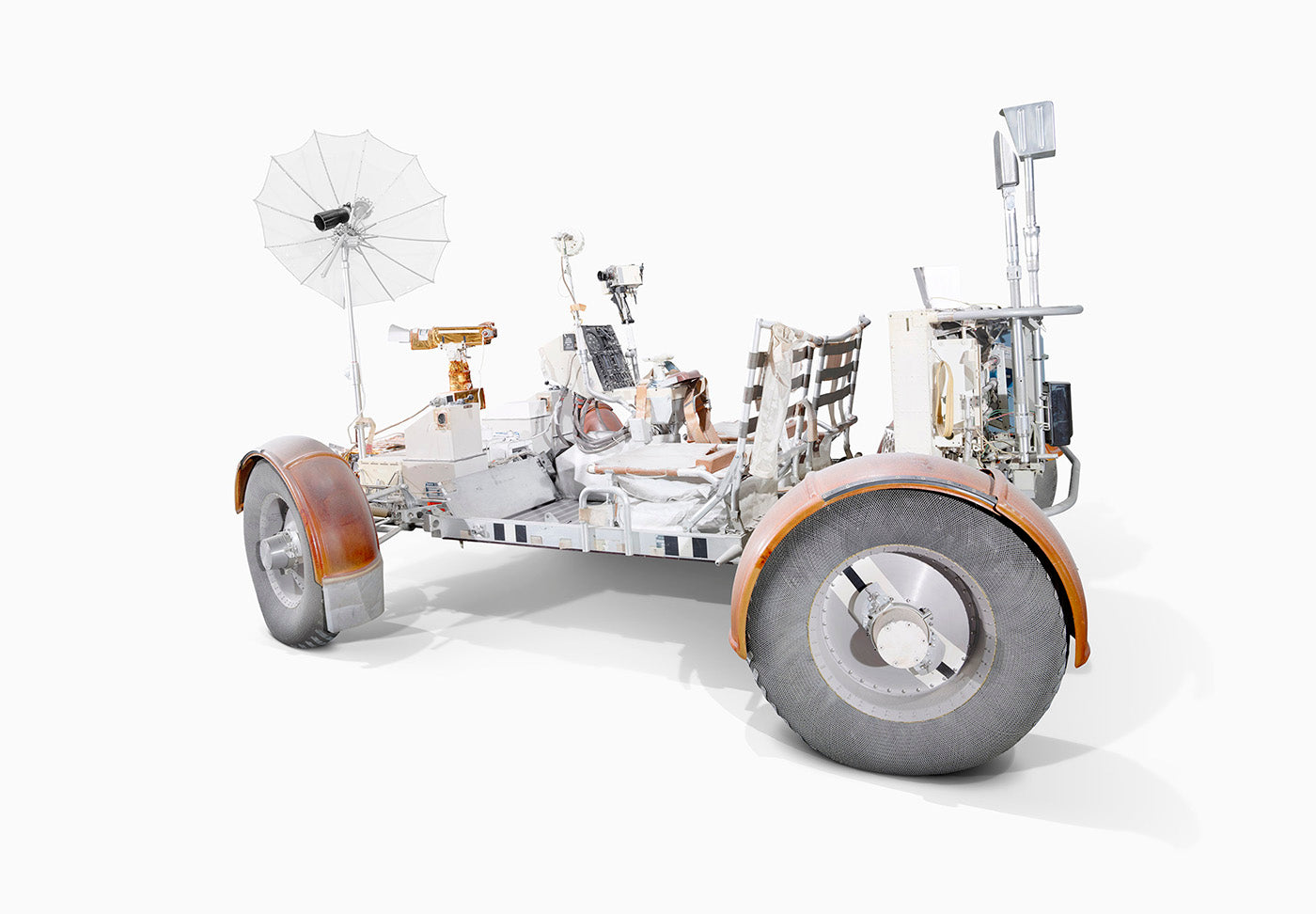
07/2019 visual culture
Astronaut Neil Armstrong stepped foot on the surface of the moon on 20 July 20, 1969, uttering a profound sentence to the watching world that became as historic as the lunar mission. “That’s one small step for man, one giant leap for mankind,” defined an advancement for mankind and an inspirational moment in history that remains as powerful today on its 50th anniversary.

Space Shuttle Atlantis Engines - Kennedy Visitor Centre.

Space Shuttle Atlantis Nose - Kennedy Visitor Centre.
To mark the Apollo 11 moon landing, photographer Benedict Redgrove has shared a series of images from his NASA: Past and Present Dreams of the Future project with us. Almost a decade's worth of work, Benedict took over 200 images of space exploration's most iconic objects as never seen before. His work is a unique and powerful tribute to the pioneers of space exploration. He gained unprecedented access to NASA's spacecraft, labs, and facilities, documenting them in incredibly intimate detail.
To gain access to this project, Benedict had to spend five years negotiating and trust-building with NASA
Having shot the front cover of our Fast Forward book and built a reputation for photographing vehicles and airplanes, Benedict's latest body of work aims to show the emotional impact of the objects and machines that allowed humans to travel 230,000 miles to the moon and beyond.

Destiny Module - International Space Station (ISS) Trainer - Johnson Space Centre.

Apollo 11 Command Module Columbia - National Air and Space Museum, Smithsonian Institute Washington.
Benedict's obsession with NASA and space began when he watched the launch of the Atlantis shuttle mission in 1981, aged 11. The suits and shuttles have an iconic stature to him. Fascinated by the space mission and astronauts, photographing inside America's home of space-based research and development became an obsession to him. To gain access for this project, Benedict spent five years negotiating and trust-building with NASA. Once this level of trust was acquired, he spent the next four years photographing inside NASA while holding down his day job.
Fifty years to the day after Neil Armstrong, Buzz Aldrin, and Michael Collins landed on the moon for their the Apollo 11 mission, we talk to Benedict about NASA: Past and Present Dreams of the Future.

Space Shuttle Training Cockpit.
‘One man’s lifetime obsession with space,’ did you achieve what you set out to capture in NASA?
The original project was just to shoot the suits, then it grew into something much bigger and grander. I feel there is more I would like to shoot. The launch of SLS and the build and testing etc. But as the launch got pushed back I ran out of time. I think once this book has been launched (with the support of the Kickstarter crowdfunding), then I would like to go back and shoot a number of other areas inside NASA. That's another story though.
"Exploration is a human desire, and space exploration has to be the ultimate iteration. It is exciting and ultimately it is part of the question of who are we, what are we doing here and are we alone?"
Were you blown away or did it fall short of your expectations?
The sites, objects, and invariably the people all blew me away. The objects for the obvious reason of their incredible history and all the reasons I list in the project-they are the reason for the project. The people because once they realized I was just as much of a fellow geek, they embraced that and showed me areas and objects that I think they wouldn't have necessarily done so without first knowing of my very real and very obvious enthusiasm for the subject.

Lunar Roving Vehicle Tyrainer (LRVT) - Space Centre Houston.

Lunar Test Article 8 (LTA8) - Space Centre Houston.
50 years on from the Apollo 11 moon landing: Why does space continue to influence imaginations as it did decades ago?
I think space will continue to feel like something magical to people for the next century and beyond. If you think about how great it feels to travel across the world to see a new country or visit a place people have rarely been to before, then space exploration is the ultimate extension of that. The nearest mere mortals can get to it is paying $60 million to buy a place on a Soyuz capsule to the space station. Even with the advent of commercial space travel, people will want more and want to see more. Exploration is a human desire, and space exploration has to be the ultimate iteration. It is exciting and ultimately it is part of the question of who are we, what are we doing here and are we alone?
Explore more of Benedict Redgrove's work through Fast Forward. Follow the NASA Project and Benedict on Instagram.















